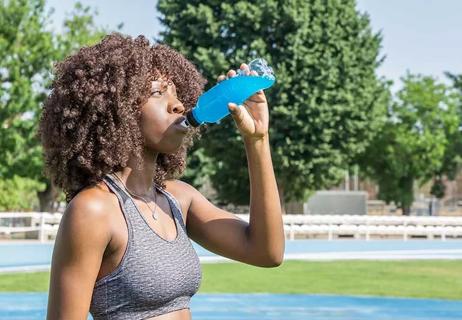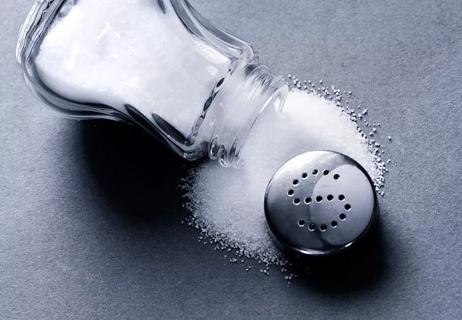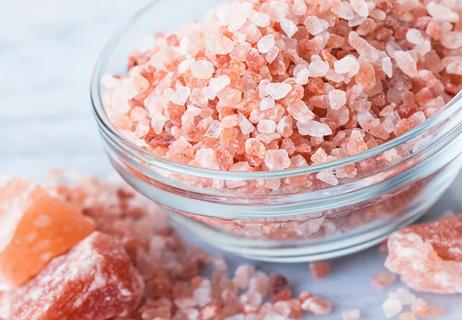Unproven and unregulated, they aren’t the best choice to boost performance

Maybe you remember those old black-and-white movies where the damsel in distress faints and is revived with a whiff of smelling salts. Or when Rocky Balboa takes a big inhale to continue the big fight after a few too many punches to the face. Or maybe you’ve watched people getting a good laugh as they mess with smelling salts on social media. Or caught a pro athlete on camera taking a sniff of the potent stuff.
Advertisement
Cleveland Clinic is a non-profit academic medical center. Advertising on our site helps support our mission. We do not endorse non-Cleveland Clinic products or services. Policy
Used since the Middle Ages (and maybe even earlier), smelling salts are having a resurgence these days. But not without raising some eyebrows along the way.
“Historically, people have used smelling salts to revive someone after a fainting spell,” explains family medicine physician Elizabeth Rainbolt, MD. “But they’re not used much medically anymore. These days, they’re commercially available and being used by some people as a pre-workout stimulant of sorts.”
Smelling salts are being sold at supplement stores and online as a performance-enhancing energy boost. They promise to “take your performance to the next level” or provide “explosive energy and strength.”
But what’s in that bottle? And what does it do to your body? Dr. Rainbolt shares the noxious truth behind smelling salts.
Smelling salts are bottled powders or packets that contain a hefty dose of ammonia and other chemicals. Ammonia is traditionally used in items like fertilizer and cleaning products. And if you know one thing about ammonia, it’s probably this: The smell is enough to knock you off your feet. Like stale pee. But worse.
“Ammonia is an irritant,” Dr. Rainbolt explains. “It irritates your airways and your lungs. When you breathe it in, you reflexively take a really big breath. It doesn’t cause a ‘high’ per se, but the rush of oxygen triggers your sympathetic nervous system to take over and can make you feel amped up in a way.”
Advertisement
That response from your nervous system is what you often hear referred to as a “stress response” or “fight-or-flight mode.” It’s a rush of adrenaline and other hormones that prepares your body for battle.
Evolutionarily speaking, the fight-or-flight response is your body’s way of helping fight off predators. But in today’s world, some people are using smelling salts to tap into that stress response rush for lower-stakes contests. They take advantage of that jolt of energy in hopes it will help them run faster, lift more or, in some cases, just get through another afternoon at the office.
Getting a noseful of smelling salts isn’t necessarily going to cause long-term damage. They’re not physically addicting. And they’re not likely to land you in the emergency room.
But that’s not to say that sniffing ammonia capsules is a healthy choice either. After all, ammonia is toxic. And conditioning your body to rely on an external stimulus to go on with your day or to pump yourself up can be a slippery slope toward testing out addictive substances.
Dr. Rainbolt explains why smelling salts aren’t your best route to improved performance.
Smelling salts smell … unpleasant, to put it mildly. It’s like getting a whiff of the worst candle in the aisle. (You know the one.) But times a couple thousand.
And your body will almost certainly have a reflexive, physical reaction to the irritation. You might sneeze. Cough (a lot). Or have trouble catching your breath. For people with conditions like asthma or other breathing or lung conditions, that reaction may be worse.
What’s more, the irritation can cause you to jerk your head suddenly. It’s like one of those sneezes that catch you off guard. You can’t help but let it out. And if you’ve had a neck or back injury, that involuntary movement can worsen the damage.
Smelling salts can put you at risk for chemical burns, Dr. Rainbolt warns. That’s particularly true if you hold the bottle or packet too close to your eyes or it comes in contact with your skin. With repeated use, smelling salts can even cause burns inside your nasal passages.
If you choose to try smelling salts, be careful to read the package label and follow the manufacturer’s instructions for their use.
Perhaps the biggest drawback to smelling salts, Dr. Rainbolt says, is that they can camouflage serious injury.
Injuries are common in contact sports. Athletes wear protective gear and have concussion protocols in place for good reason. But taking smelling salts can mask the pains and symptoms of injuries, making athletes miss out on getting the medical attention they need.
Advertisement
You’ve probably heard those stories about people getting shot or trapped under a pile of rubble and don’t even realize they’re hurt until after the surge of adrenaline wears off. The same can be true when you take smelling salts. That rush of fight-or-flight hormones can keep you from feeling pain until much later. And delaying medical treatment can be dangerous.
Imagine a case where a quarterback gets sacked and hits his head, taking a pounding from a safety twice his size. He shakes it off and grabs some smelling salts on the bench. The adrenaline response kicks in and he feels great. So, he heads back to the field. But without the smelling salts masking his pain response, he might have been inclined to get medical attention, which he may need badly.
Major sports organizations have rules banning performance-enhancing substances. But most major sports associations, including the NFL, NHL, NBA and the Olympics allow athletes to use smelling salts.
That’s because — despite the claims made by manufacturers and fans of the stuff — research hasn’t shown smelling salts offer a performance boost. And because they’re sold as supplements, smelling salts aren’t regulated by the U.S. Food and Drug Administration (FDA). So, makers can make big claims without any science to back them up.
Advertisement
“We need more research to know what smelling salts really do — or don’t do — in terms of athletic performance,” Dr. Rainbolt states. “From what we do know, there are too many risks without any known benefits. So, I don’t recommend them to my patients. It’s just not worth it.”
Advertisement
Learn more about our editorial process.
Advertisement

Too much sodium can cause high blood pressure and increase your risk of heart disease

Eating too much salt can put extra pressure on your blood vessels and heart

Keep the flavor and cut the sodium by using herbs, garlic, ginger, citrus and more in your cooking

Excess salt and sodium consumption is a worldwide health concern

Two key electrolytes — sodium and chloride — are the building blocks of salt

Too much salt in your diet? Here’s how to cut back

How to make your meals less salty and more flavorful

Plus 5 tips for lowering your salt intake

Start having sex about 72 hours before ovulation, then at least every other day during your fertile window

Attachment theory suggests that your earliest relationships shape connections throughout your life

It isn’t a recognized mental health disorder, but research shows that problematic social media use can negatively affect your mental health, self-esteem and sleep